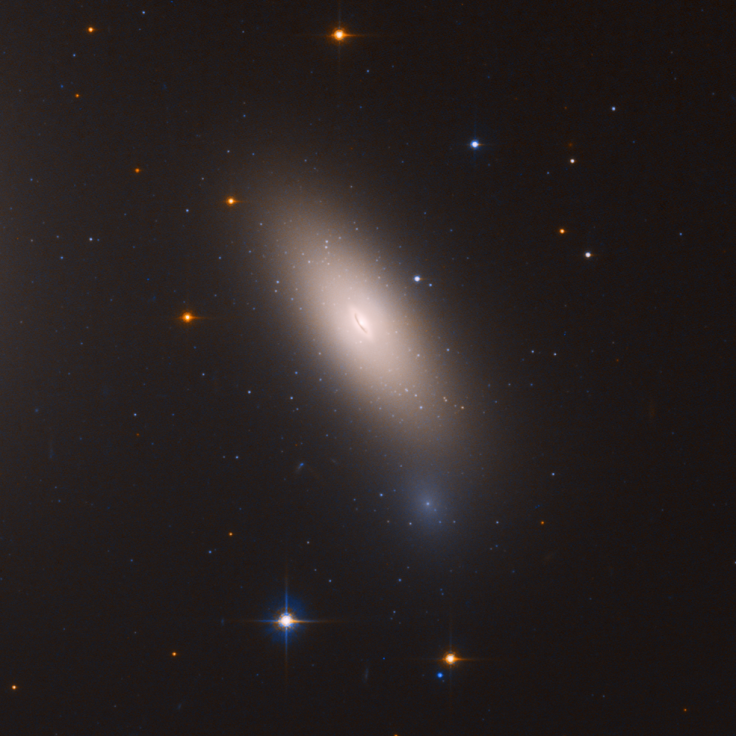NASA Hubble Snaps 'Waterfall' Galaxy With Stars Hotter Than Sun [Photo]
KEY POINTS
- The Hubble Space Telescope snapped a photo of UGCA 193, a galaxy located 32 million light-years away
- The blue color of the galaxy means that it comprises hot stars
- Some of its stars are more than six times hotter than the sun
NASA has shared a stunning photo of a galaxy with an unusual shape located 32 million light-years away from the Milky Way.
In the constellation of Sextans lies a galaxy called UGCA 193 that looks like a cascading waterfall. The galaxy is also known as FGC 998 or LEDA 29086.
In a new image taken by the NASA/ESA Hubble Space Telescope, this majestic-looking galaxy appears to cradle quite a number of young stars. At the bottom part of the galaxy is a bright blue haze that makes it seem like stars are falling from the above.
Although UGCA 193 certainly appears breathtaking from a distance, it is only meant to be appreciated from afar as the galaxy is filled with young stars hotter than the sun.
"The blue color of UGCA 193 indicates the stars that we see are hot — some more than six times hotter than our Sun. We know that cooler stars appear to our eyes as redder, and hotter stars appear bluer," Hubble astronomers said in the photo caption.
"A star’s surface temperature and color are also linked to its mass, with heavier stars 'burning' at higher temperatures, resulting in a blue glow from their surfaces," they added.
UGCA 193 belongs to the NGC 3115 group, a small gathering of several galaxies of varied shapes and colors, according to Sci-News.
The space agency also shared the incredible image taken by Hubble on NASA Goddard's official Instagram page Saturday.
Last month, NASA also shared a beautiful snapshot of NGC 34, a spiral galaxy located approximately 271 million light-years away in the constellation of Cetus (the Sea Monster). In the image, the galaxy appears to resemble a bioluminescent deep-sea creature in space as its outer region looks almost translucent and is dotted with stars and wispy tendrils.
NGC 34, which has a diameter of about 165,000 light-years, was born from the merger of two massive spiral galaxies millions of years ago. It was discovered in 1886 by astronomer Frank Muller. Astronomer Lewis Swift observed it again later that year.
A galaxy is a collection of gas, dust, and billions of stars and their solar systems, all held together by gravity, according to NASA Space Place. Scientists predict that there are about 100 billion galaxies in the universe, all with varying sizes, shapes and colors.

© Copyright IBTimes 2024. All rights reserved.





















